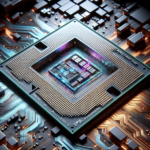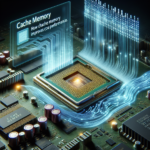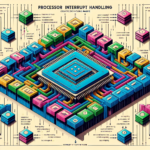Understanding the Security Features of Modern CPUs

Understanding the Security Features of Modern CPUs
In an era where digital threats are increasingly sophisticated, the security of computing systems has never been more critical. Modern Central Processing Units (CPUs) are at the heart of these systems, and they come equipped with a variety of security features designed to protect data and ensure the integrity of operations. This article delves into the security mechanisms embedded in contemporary CPUs, explaining how they work and why they are essential.
Overview of CPU Security
CPUs are the brains of computers, executing instructions and managing data flow. Given their central role, they are prime targets for cyberattacks. To counter these threats, CPU manufacturers have integrated numerous security features into their designs. These features aim to protect against a range of attacks, from malware and viruses to more sophisticated exploits like side-channel attacks and hardware vulnerabilities.
Key Security Features in Modern CPUs
1. Hardware-Based Security Modules
One of the most significant advancements in CPU security is the inclusion of hardware-based security modules. These modules provide a secure environment for executing sensitive operations, isolated from the main CPU processes.
- Trusted Platform Module (TPM): TPM is a dedicated microcontroller designed to secure hardware through integrated cryptographic keys. It ensures the integrity of the system by storing cryptographic keys, passwords, and certificates securely.
- Intel Software Guard Extensions (SGX): SGX creates isolated enclaves within the CPU, allowing sensitive code and data to be protected from unauthorized access, even if the operating system is compromised.
- AMD Secure Encrypted Virtualization (SEV): SEV encrypts virtual machine memory, ensuring that data remains secure even if the hypervisor is compromised.
2. Secure Boot and Firmware Protection
Secure boot mechanisms ensure that a system boots using only software that is trusted by the Original Equipment Manufacturer (OEM). This prevents malicious code from being loaded during the boot process.
- UEFI Secure Boot: Unified Extensible Firmware Interface (UEFI) Secure Boot verifies the digital signature of the bootloader and other critical components before they are executed.
- Intel Boot Guard: Intel Boot Guard provides hardware-based boot integrity protection, ensuring that the system boots only with a trusted BIOS or firmware.
3. Memory Protection Mechanisms
Memory protection is crucial for preventing unauthorized access to data and code. Modern CPUs employ several techniques to safeguard memory.
- Data Execution Prevention (DEP): DEP marks certain areas of memory as non-executable, preventing malicious code from running in these regions.
- Address Space Layout Randomization (ASLR): ASLR randomizes the memory addresses used by system and application processes, making it more difficult for attackers to predict the location of specific functions or data.
- Intel Memory Protection Extensions (MPX): MPX provides hardware support for buffer overflow protection, helping to prevent common exploits that target memory vulnerabilities.
4. Virtualization-Based Security
Virtualization technology allows multiple operating systems to run on a single physical machine, isolated from each other. This isolation can enhance security by containing potential threats within virtual environments.
- Intel Virtualization Technology (VT-x): VT-x provides hardware support for efficient virtualization, enabling secure and isolated execution of virtual machines.
- AMD-V: AMD’s virtualization technology offers similar capabilities, ensuring that virtual machines are securely isolated from each other and the host system.
5. Side-Channel Attack Mitigations
Side-channel attacks exploit indirect information, such as timing or power consumption, to infer sensitive data. Modern CPUs incorporate various mitigations to protect against these attacks.
- Cache Partitioning: Techniques like Intel Cache Allocation Technology (CAT) allow for the partitioning of cache resources, reducing the risk of cache-based side-channel attacks.
- Speculative Execution Controls: Following the discovery of vulnerabilities like Spectre and Meltdown, CPU manufacturers have implemented controls to mitigate risks associated with speculative execution.
Emerging Trends in CPU Security
As threats evolve, so too must the security features of CPUs. Several emerging trends are shaping the future of CPU security.
1. AI and Machine Learning for Threat Detection
Artificial Intelligence (AI) and Machine Learning (ML) are being integrated into CPU security mechanisms to enhance threat detection and response. These technologies can analyze vast amounts of data to identify patterns indicative of malicious activity.
2. Quantum-Resistant Cryptography
With the advent of quantum computing, traditional cryptographic methods may become vulnerable. CPU manufacturers are exploring quantum-resistant cryptographic algorithms to ensure long-term security.
3. Enhanced Hardware Isolation
Future CPUs are likely to feature even more robust hardware isolation techniques, ensuring that sensitive operations are securely separated from less trusted processes.
FAQ
What is the role of a Trusted Platform Module (TPM) in CPU security?
A Trusted Platform Module (TPM) is a dedicated microcontroller designed to secure hardware through integrated cryptographic keys. It ensures the integrity of the system by securely storing cryptographic keys, passwords, and certificates, and is used in various security applications such as secure boot, disk encryption, and digital rights management.
How does Intel SGX enhance security?
Intel Software Guard Extensions (SGX) enhances security by creating isolated enclaves within the CPU. These enclaves protect sensitive code and data from unauthorized access, even if the operating system or other software components are compromised. This isolation helps safeguard against a wide range of attacks.
What is the purpose of Data Execution Prevention (DEP)?
Data Execution Prevention (DEP) is a security feature that marks certain areas of memory as non-executable. This prevents malicious code from running in these regions, thereby mitigating the risk of exploits that rely on executing code from data pages, such as buffer overflow attacks.
How do side-channel attacks work, and how are they mitigated?
Side-channel attacks exploit indirect information, such as timing, power consumption, or electromagnetic emissions, to infer sensitive data. Mitigations include cache partitioning, speculative execution controls, and other techniques that reduce the amount of exploitable information available to attackers.
What are the benefits of virtualization-based security?
Virtualization-based security enhances protection by isolating different operating systems and applications within virtual machines. This isolation helps contain potential threats, preventing them from spreading to other parts of the system. Technologies like Intel VT-x and AMD-V provide hardware support for efficient and secure virtualization.
Conclusion
The security features of modern CPUs are critical in safeguarding computing systems against a wide range of threats. From hardware-based security modules and secure boot mechanisms to memory protection and virtualization-based security, these features work together to create a robust defense. As technology continues to evolve, so too will the security capabilities of CPUs, ensuring that they remain at the forefront of protecting our digital world.




